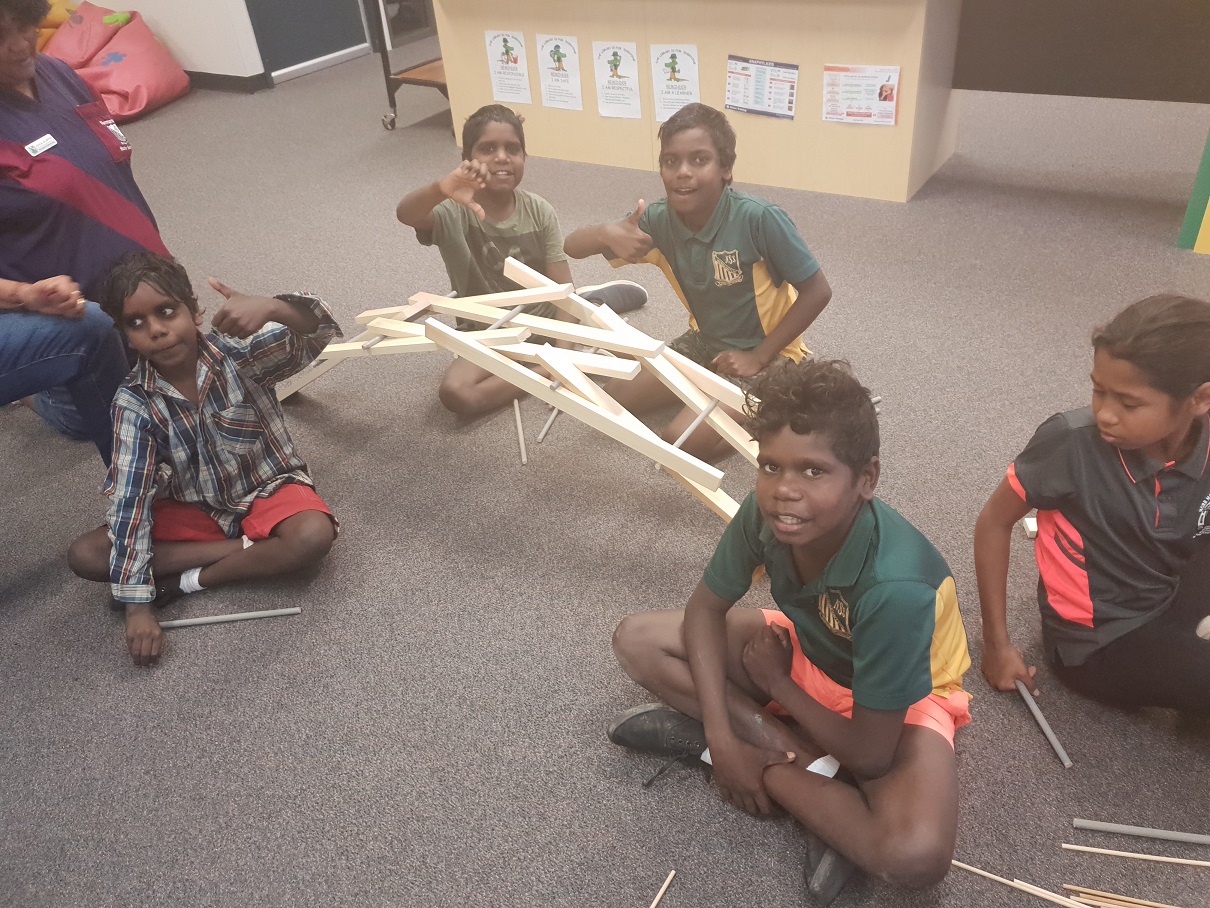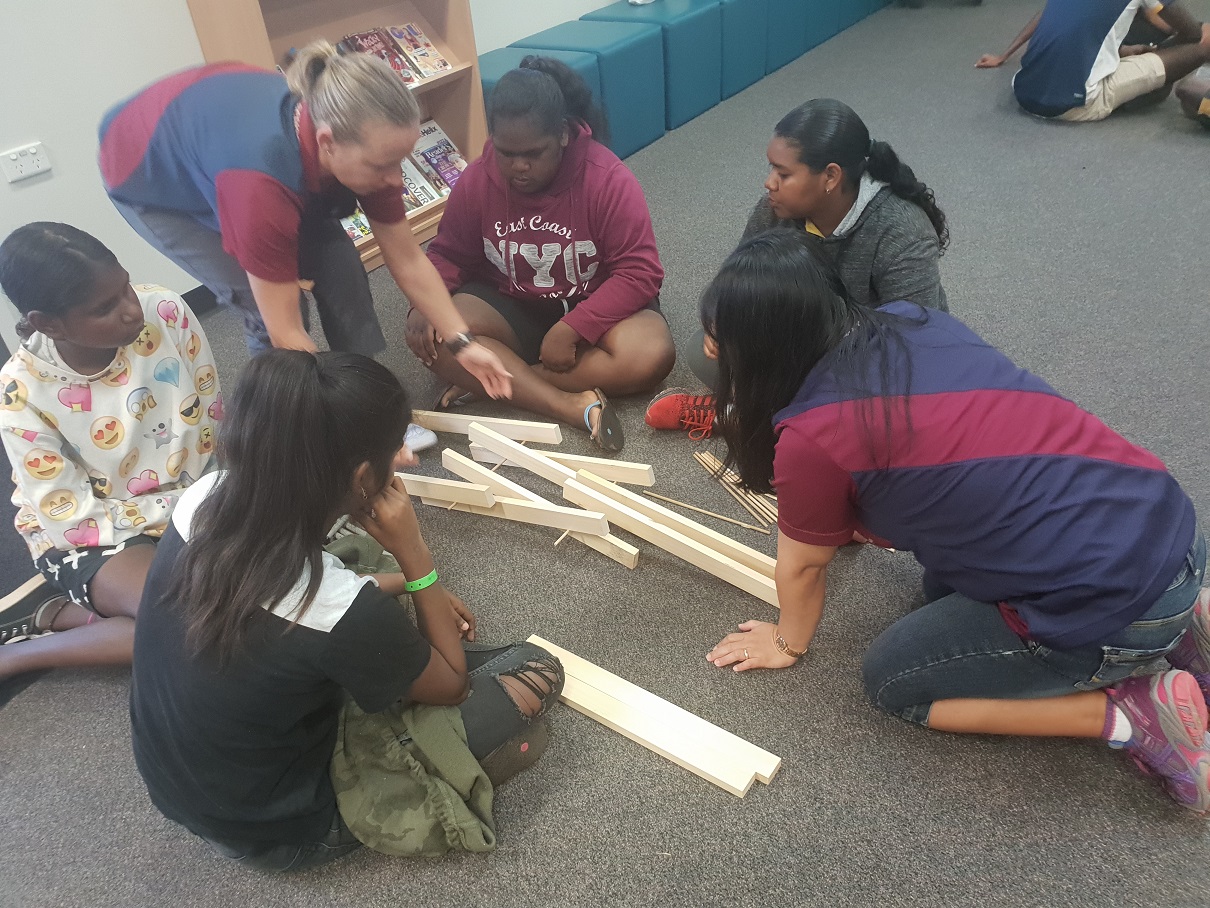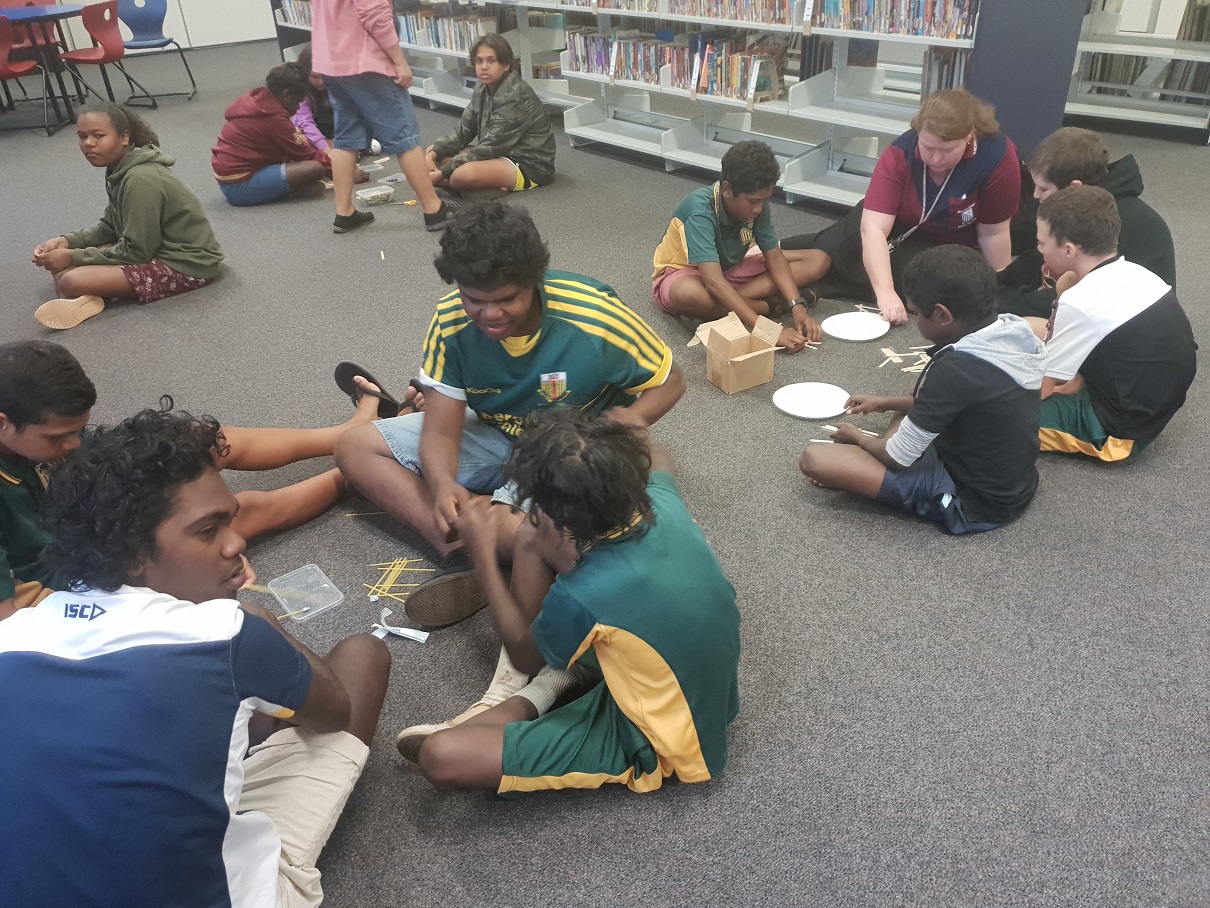Building bridges with Indigenous students
For several years Associate Professor Rowena Ball from the ANU Mathematical Sciences Institute and the Research School of Chemistry has been participating in the CSIRO STEM Professionals in Schools program.
Associate Professor Ball shares her latest experiences of working with two remote Indigenous schools, Normanton State School and Gulf Christian College, in the Gulf Country region of northwest Queensland.
The science theme this term is "forces and motion" and the social theme is "building cross-cultural bridges", so the complementary activity I chose was building real bridges! (The students also learned what a metaphor is!)
We all became civil engineers for the day. First I asked why we, as engineers, need to understand forces. Then I showed the YouTube video of the Tacoma Narrows Bridge violently tearing itself to bits under the force of strong winds in 1940, and the Westgate bridge collapse in 1970.
Then, under my direction, the kids all built a Leonardo Da Vinci bridge! It is designed to stay up purely under tension and friction - no ropes or bolts or fastenings of any kind are involved - so they learned about forces hands-on. (I could have written equations for forces on the whiteboard and they would have learned nothing.)
The kids engaged intensely with this activity, once they realised what they were doing, and many built the bridge to six or seven spans. They also made the Da Vinci Bridge in miniature with paddle-pop sticks, and free-form design bridges with spaghetti.
Not only do they learn about gravity, tension, friction and torsion forces, they also learn about optimisation, and scientific design. If you want a bridge to stay up, you have to think it through in advance, and adjust on the fly!



